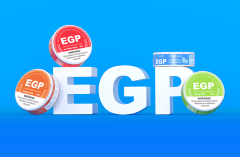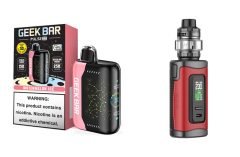Table of Contents
DISCLAIMER: This Knowledge Base Entry refers to vaping with subohm tanks, variable wattage regulated advanced vaporizers, and does not get into the complicated math involved with building custom coils. For more advanced articles and entries, especially temperature control vaping) please use the Knowledge Base menu to access them.
It had been predicted back in early January that 2015 would be the year of “temperature control” in vaping devices. Although 3 months of the year have already passed there is still a lot of time left for this prediction to come true. But will it? What is temperature control and why should you care?
The Evolv DNA 40D
The Evolv DNA 40D board is the most sophisticated board found in electronic vaporizers to date. Evolv has been making this feature-rich board since the DNA 10, a 10w board. In a short time, relatively speaking of course, Evolve kept improving the board with the DNA 15, 20, 30, and now 40 and the updated 40D.
While its main feature, variable wattage that reads the ohms of the coils and adjusts the voltage automatically, made it very easy for vapers to make the jump from variable voltage to variable wattage, there is much more to this amazing piece of technology. I’ll get to those features soon enough, but first…
…In a nutshell, here’s the simplest definition of the value of the DNA board:
A Vaper using a device equipped with a DNA board can set his or her desired wattage once and forget it. If a vaper wanted to vape at 20w consistently and across the board, all that is needed is to set the wattage dial to 20w. Even when changing out coils, tanks, and glassomizers, the vaper didn’t need to adjust the wattage because the DNA board adjusts the voltage and each time your vape experience would be spot on and enjoyable. Want a bit more warmth in your vapor? Bump the wattage up a bit and the DNA board configures the voltage output to match, providing warmer vapor while maintain all other settings.
Other DNA Board Features
In addition to regulating the voltage output based on your preferred wattage the DNA board offers a whole lot more, including a brilliant battery management system that gives the Vaper more vape time per charge along with ‘minimal’ heat generation… Evolv calls this “Synchronous Rectification”.
The DNA board provides fully regulated power control so as the battery drains the wattage output remains the same. As with other, less expensive boards used in many Chinese devices, it also offers battery protection, atomizer protection, and other, common features found in most advanced personal vaporizers.
Exclusives
Evolv: Exclusive to the DNA 40 board is temperature control, which I’ll get to shortly, preheating, step up/step down topology, digital user controls, and brilliant OLED screen and onboard buttons.
The latest Evolv DNA 40 board uses gold-plated connection points and has the ability, for the first time, to switch between F degrees and C degrees. Needless to say, at the time of this writing the Evolv DNA 40D is the most advanced board ever made for electronic vaporizers.
Before I move on to the topic at hand, temperature control, I want to mention that the two most popular devices that use the Evolv DNA 40 boards; Vaporshark and the DNA 40 and rDNA 40, and Vapor Flask. Vaporshark used the DNA 40 Dual Celsius board with a larger OLED screen, while Vapor Flask, at this writing, is using the DNA 40 board with the standard size OLED screen. However, anyone with $49.99 or $59.99 can purchase either board for use in their own device, many clone companies have copied the designed of these two vaporizes and use the same Evolve DNA 40 boards, while others simply copy the design and throw in a 40w board and call it a clone of the Vaporshark rDNA and Vapor Flask.
The Temperature Control Preamble
Now we get to the meat of the Evolv DNA 40 boards; Temperature Control, at least Evolv’s patented version of temperature control. This feature, while still barely used in mainstream vaping is about to get a whole lot more popular.
Imagine never having to suffer another dry hit. That, in the simplest terms, is the biggest reason to want this feature in your next vaporizer, but there is more.
Unfortunately, the temperature control feature only works with special nickel, or Ni200 wire. Nickel has virtually no resistance to electricity and sending power through nickel wire you get 99.99% of the power on the other end. The reason nickel was never considered an ideal metal to use for wrapping coils before now is there was no way to control the amount of power reaching it. The result would be exploding batteries and injured Vapers.
Even with Evolv’s patented temperature control feature on the DNA board it requires a coil with many more “wraps” to build up an acceptable resistance that is considered “safe” for vaping. For instance, in order to build up to a 0.15-ohm resistance, considered extremely low resistance, it takes 13 wraps on a normal size coil. Instead of the usual 4 or 5 wrap coils you see with Kanthal wire, nickel needs to be slowed down with additional “wraps”.
It’s not just power…
Have you ever wondered why a very high wattage vaporizer, say the Simeiyue God 180 mod, putting out up to 180 watts (with 3 high amp batteries and in “super” mode) cannot fire the 0.2-ohm Kanthal coil found in the Horizon Arctic Tank (and the flood of others coming online as I write this)?
Many people want to believe if you throw more power to a sub-ohm coil should be enough to power even the lowest of low-resistance Kanthal coils. “I’m throwing a full 180 watts at this coil and I still can’t get to fire!” The answer is that pure power is only half the solution. In fact, a $49.99 eLeaf iStick 50 can fire off a 0.2-ohm coil without a problem. The vapor may not be as warm as you’d like it to be, but the flavor and vapor output is enormous, and pleasurable.
So what’s the problem…
Without getting overly complicated the reason why the God mod won’t fire off a 0.2-ohm coils is the amperage limit of the vaporizer itself. This device has an amperage limit of 13-15 amps. In order to fire a 0.15-ohm coil (Kanthal) it would need a higher amperage limit than the mod is capable of. The eLeaf iStick 50w does in fact have the amperage needed to fire off a 0.2ohm Kanthal coil at the full 50w. That said, to go below 0.2ohm coils you need a mechanical mod, a device that delivers all the power it has without regulation. Vaping with subohm coils with mechanical mods is not nearly as safe as vaping with regulated variable wattage vaporizers, at least for mainstream Vapers.
When it comes to subohm vaping with tanks like the Arctic by Horizon, the Subtanks from Kanger, and the Atlantis from Aspire, not only are they much safer to use than building your own subohm coil RDA’s and RBA’s, they allow for the use of safer vaporizers, like the iStick 50 and the DNA 40 mods from Vaporshark and Vapor Flask.
The DNA 40 is, naturally, a 40-watt vaporizer and because of the sophisticated circuitry an excellent vape can be experienced using a Kanger Subtank equipped with nickel wire prebuilt OCC coil head rated at just 0.15-ohm because, at 40w, it needs 2.45v and 16.33 amps, settings that are handily available on a DNA 40 vaporizer but out of reach in the God 180. Wattage (power) and amperage work hand in hand to deliver a safe subohm experience.
Now Let’s Talk Temperature Control And Ni200 Wire
Stated as simply as I can, the Evolv DNA 40 board has sensors that detect whether or not the nickel wire coils in the special Subtank (or Aspire Nautilus) and if the coils are not beneath the eliquid it will not send power to the coils, or at least not enough power to heat the coils. Without the power to heat the coils you’ll never again have to suffer the injustice of feeling the subohm dry hit, one of the nastiest experiences in vaping. A dry hit in the 1.0+ subohm territory is bad enough, but not nearly as bad at dry hitting a 0.5-ohm or lower coil.
When you get down into the deeper subohm levels of 0.15 or 0.16 ohm coils in the Ni200 prebuilt OCC’s you need to utilize the temperature control feature to maintain safe vaping. Of course, there are plenty of Vapers building DIY coils with Kanthal down to 0.1ohm and running them on mechanical mods, but this piece focuses on prebuilt coils and temperature control with Ni200 wire.
Subohm Vaping Negatives
To fully understand why avoiding a dry hit with a subohm coil the vaper needs to be aware of some basic ‘common sense’ concerns about the drawbacks…
To maximize flavor and clouds in a subohm tank the need for a higher VG ratio is a must. Sure, you can use a 50/50 PG/VG blend, but a Max VG, or High VG will produce denser clouds. Flavor is also richer, full-bodied, and more satisfying when using a subohm coil.
Subohm vaping means vaporizing eliquid at a higher temperature, anywhere between 450-600 degrees. This produces a wicked hot juice and warm vapor. It also vaporizers eliquid faster so a subohm Vaper will use 3x to 4x times the amount of eliquid than the 1.0+ ohm vaper will use.
Because subohm vaping takes more power and more amperage to heat the coils the faster the battery will discharge. And because these are regulated vaporizers, meaning that a 40w setting will output at 40w when fully charged and minimally charged, causing even faster discharge.
Lastly, hotter burning coils vaporize eliquid more efficiently, making high levels of nicotine unnecessary in most cases. I used to vape 18mg nicotine juice and since moving into the subohm territory I’m find 3mg of nicotine just as satisfying, though my preferred level is 6mg for a slightly stronger throat hit.
Now, imagine a board in your vaporizer that recognizes all of the above, and more, and manages the power (wattage) so intelligently that very little power is wasted, or lost. Now imagine a board that can also stop a coil from heating up if that coil is not underneath a certain level of eliquid. No heat, less power loss. That is why temperature control on the DNA 40 board is such a valuable feature to subohm vapers. No dry hits and a longer battery charge.
More….
But, it doesn’t end there. The ability to manually set the temperature of the eliquid in your vaporizer is another tool to perfecting your sweet spot. With variable wattage your vaporizer adjusts the voltage to create a good vape, and whether you change your tank, or the ohms of a new coil, you can still maintain the same wattage and the device will alter the voltage accordingly. You’ll find that with an Evolv DNA 40 board that when you switch tanks, or simply remove the tank to refill it, it will ask you whether this new attachment means a new coil or the same one when you reattach it, and it will calibrate itself accordingly once you answer by pressing the Up or Down button.
Being able to set the temperature means being able to set the warmth of your vapor without kicking up the wattage. Combine this with never having to feel the burn in your throat or the nasty taste of organic cotton in your mouth after a subohm dry hit and its practically nirvana.
However, all the above depends on using Ni200 (nickel) wire coils, either prebuilt coils or DIY. Without nickel wire the temperature control feature will not work…yet.
The Future
Soon, very soon, other companies will begin to release vaporizers with other means of controlling the temperature of your eliquid inside the tank. Some will license the DNA board, but some are developing means of reproducing the features of the Evolv DNA board without infringing on the patents held by Evolv. The new Pioneer4You IPV 4 is implementing the SX 350 J board by Yihi e-cigar, a 2nd generation intelligent board with several groundbreaking features. Once we have the opportunity to examine the IPV 4 and it’s board we’ll talk more about it. For now, consider this the infancy stage of temperature control and other intelligent features and its about to kick into overdrive.
The first Evolve DNA board was designed and used a few years back with the DNA 10, which was considered a game-changing board for vaporizers, but “temperature control” is a newest feature launched with the Evolv DNA 40, and once again its become a game changer in the subohm segment of the industry.
Obstacles For The Future
There are a couple of obstacles that must be overcome before temperature control can be embraced by the vape community at large, and only after these obstacles have been removed will the vape community propel it enough to reach critical mass. But make no mistake; it will happen.
Temperature Control is both a safety feature and a feature that provides an even better vape. That said, in order to see it become widely used and accepted, the engineers need to find a way to make nickel wire less expensive and easier to work with, and/or they need to find a way to use temperature control with the more widely available and affordable metals, like Kanthal. I have no doubt that solutions will be found, and I believe it will be sooner rather than later. Until then, Ni200 wire is the only way to access the feature.
My first experience with nickel wire coils was with the purchase of two 5-pack Subtank coils I purchased from Vaporshark ($18.95 per 5-pack). After opening the mailing envelopment I saw that the two packs were actual Kanger products, not custom coils made by Vaporshark, something I expected to be the case. The next morning, while talking with my co-host Jack I learned that Ave40 had recently placed a large order with Kanger for these nickel coils, and because Ave40 had the foresight to believe in the future of temperature control we will soon see them available in many vendor stores and online shops. The price of these prebuilt Ni200 coil heads will be driven down, making them more attainable, and more Vapers will jump on devices built with DNA 40 or the SX350J boards, and as large Chinese manufactures come to market with their versions, or visions of temperature controllable vaporizers this amazing ability will no longer be the purview of Vaporshark and Vapor Flask. Is a temperature control Joyetech eGo One on the horizon? Will the next ProVari have it, or the next iStick? I’d certainly bet on it.
John Manzione





